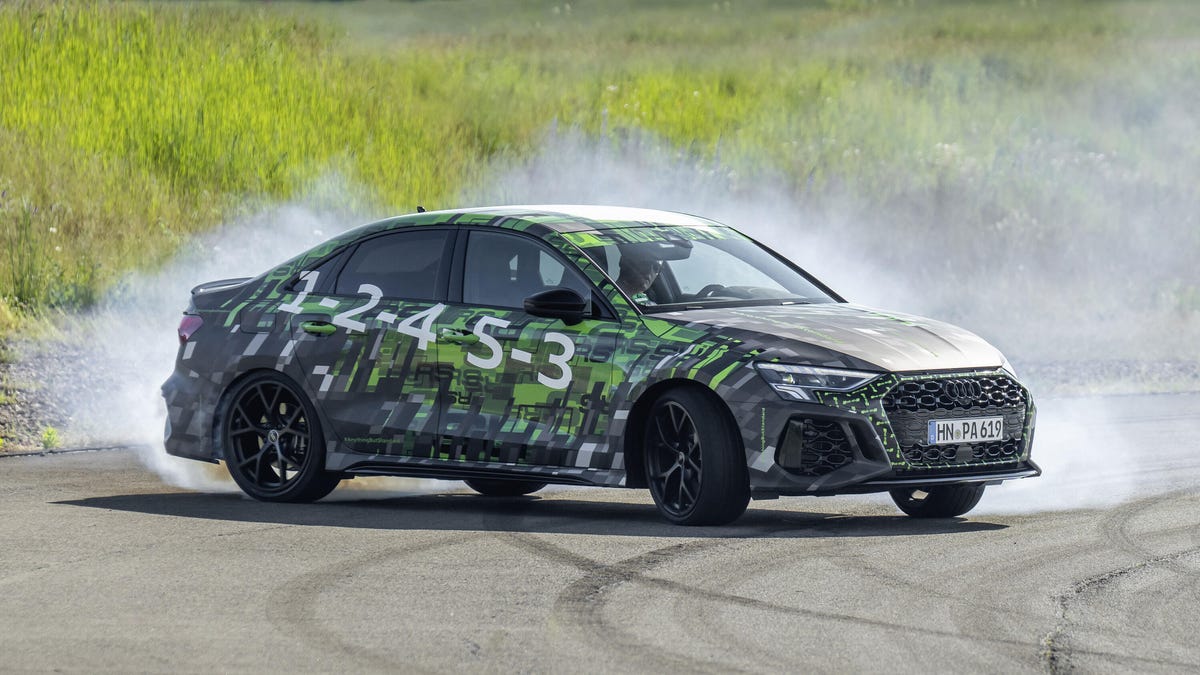2022 Audi RS 3 promises five-cylinder power and a drift-happy differential
Some big changes are coming to Audi's smallest RS model.
The forthcoming 2022 Audi RS 3 will mix a bit of the old with a bit of the new. While the sedan and its five-door Sportback sibling won't be officially revealed until later this summer, Audi dropped a few big details about what to expect.
The first thing you'll probably notice is the "1-2-4-5-3" sequence slathered across the sides of both cars' camouflaged exteriors. That alludes to the five-cylinder engine hiding under the hood. Power will be improved from 394 horsepower to 401, and it will be spread across a wider rev range, while torque gets a boost from 354 pound-feet to 369. It should rocket its way to 62 mph in just 3.8 seconds, which is impressively quick for Audi's tiniest RS variant, and it'll keep going until it tops out at 180 mph.
That's cool in and of itself, but there's also a new piece of technology tucked into the drivetrain that Audi's proud of. It's called the RS Torque Splitter, and it dramatically alters how power is delivered.
Previous versions of the RS 3's all-wheel-drive system used what's known as a Haldex system. This system was front-axle biased and used an electronically activated clutch to couple and uncouple the whole rear axle as traction permitted. The new RS Torque Splitter puts an electronically controlled clutch on each rear output shaft, allowing Audi to determine exactly how much torque should go to each rear wheel. This permits for greater traction in cornering, but for the hooligans out there, this allows Audi to include a mode that will shove as much power to one of the rear wheels as possible.
Yep, that's a drift mode. Which, mind you, Audi only wants you using on closed roads.
Here's a peek at the inner workings of the RS Torque Splitter.
RS Torque Rear, as it's so Teutonically named, is just one of seven different modes available on the new RS 3, in addition to the usual hits like Comfort, Dynamic and Individual. In addition to fudging how the torque splitter delivers power, the vehicle modes will also adjust steering weight, shift points, damping strength and exhaust note.
While the idea of a torque-vectoring rear differential isn't exactly revelatory, it's a big upgrade for the RS 3 -- and its sister vehicle, the upcoming 2022 Volkswagen Golf R that we already adore -- which some believe has been held back by its front-biased Haldex system. Keep your eyes peeled to Roadshow for the full reveal later this summer, hopefully followed by lots of tail-happy seat time.


